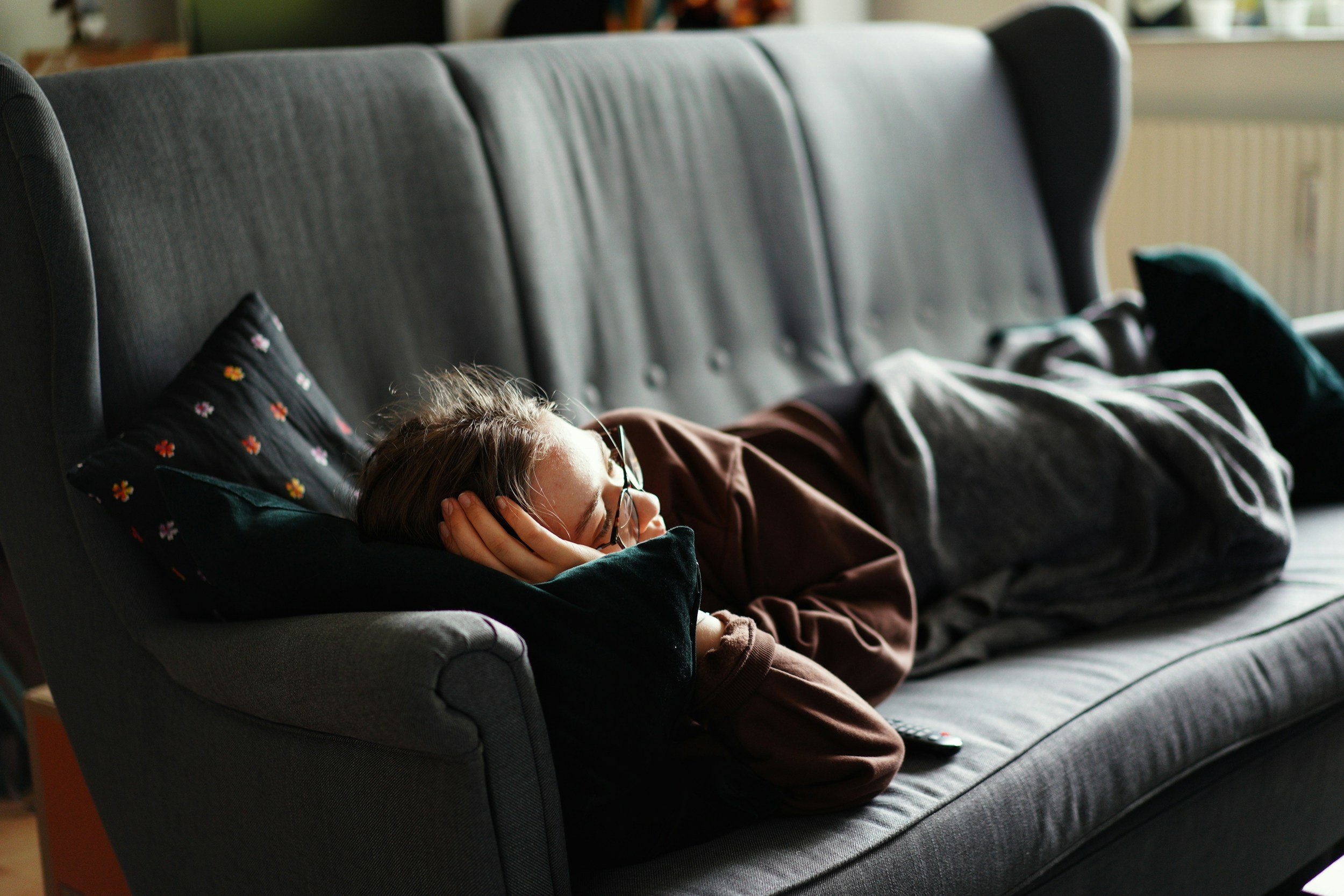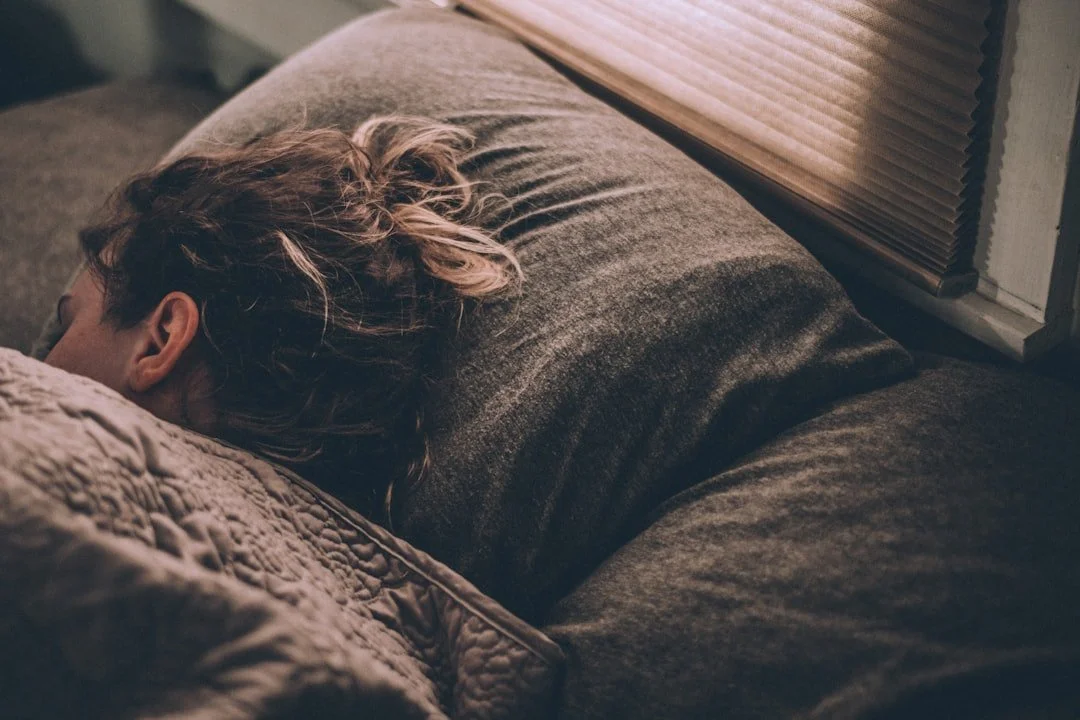
Cognitive Behavioral Therapy for Insomnia (CBT-I)
The Most Effective Evidence-Based Treatment for Insomnia
What is CBT-I?
Each of us have two internal systems that regulate and promote sound sleep: our circadian rhythm and our sleep drive. If you’ve ever had a time in your life when you slept well, those systems were likely doing exactly what they’re supposed to do. But sometimes those systems get out of alignment or stop functioning at all, triggering a spiral of insomnia.
Cognitive Behavioral Therapy for Insomnia (CBT-I) is a set of evidence-based treatment strategies that are customized to each person’s unique experience of insomnia, designed to reboot those sleep systems to get your sleep back on track.
CBT-I does this by shaping both behavior and thinking to promote good sleep. This includes aligning the person’s sleep schedule to their body’s natural sleep drive and circadian rhythm, ensuring the bed and bedroom foster a conditioned response for calm instead of frustration, using relaxation strategies to induce sleepiness in the evening, and bringing down the noise in the head so worries about sleep or other life challenges are less disruptive.
History of CBT-I
In the past 20-30 years, behavioral and cognitive strategies to treat insomnia began coalescing under the umbrella of CBT-I. They were predicated on the idea that there are three primary factors that contribute to insomnia, which they labeled the 3P model (Walker et al. 2022). The first are predisposing factors, such as the tendency for high emotional reactivity to situations. The second are precipitating factors that trigger the episode, such as a stressful life event. And the third are perpetuating factors, which simply means that once we fall into an insomnia episode, we often unwittingly engage in patterns that keep us stuck in it. CBT-I addresses all three of the Ps to help the person improve their sleep quality and build their confidence in managing future disruptions in sleep.
CBT-I is an Evidence-Based Therapy for Insomnia
CBT-I is recommended as the first line treatment for insomnia by several national and international health organizations such as the American Academy of Sleep Medicine, the European Sleep Research Society, the American College of Physicians, the Department of Veterans’ Affairs/Department of Defense, and others. It’s been validated in multiple research studies and shown to be more effective than sleep medication in the long-term treatment of insomnia (Muench et al. 2022).
How Does CBT-I Work?
CBT-I can be administered on its own or as an adjunct to regular therapy if the person is also experiencing other mental health issues such as depression or generalized anxiety. In these cases, insomnia is treated concurrently with whatever other mental health issues the person has. In my practice, I often use CBT-I and standard CBT together for people with both insomnia and other mental health issues.
When CBT-I is administered on its own, it’s a short-term treatment that often lasts just 4-8 sessions. If the person has no other associated mental health issue, then sessions are typically scheduled in two-week intervals. Here is a typical session structure:
Session Structure of CBT-I
Session 1: The first session begins with a thorough assessment of your sleep and factors that have contributed to your insomnia, such as the 3Ps mentioned earlier. This includes your current sleep schedule, patterns, behaviors, and thoughts related to sleep. It includes life stressors and other environmental issues impacting your sleep. We’ll also assess for other contributing mental health issues and the possibility of other sleep disorders such as sleep apnea or restless leg syndrome.
At the end of this first session, goals for therapy will be established and the sleep diary will be introduced, which will guide recommendations about your customized sleep treatment. Each morning, throughout treatment, you’ll record your sleep data from the night before. This includes the time you got into bed, how long it took to fall asleep, the number and duration of your awakenings, your final wakeup time, and the time you got out of bed. It only takes a few minutes and most of you will use a simple app to record it.
Sessions 2+: After the first session, you’ll record your sleep diary data for two full weeks, so we get an accurate snapshot of your sleep. Then we’ll discuss your data in session two to see how closely it aligns with your predictions.
One of the most important data points we’ll be looking at is called sleep efficiency. This is the ratio of your total time in bed to the total time that you were asleep. Initially, this number may be as low as 50% which means you’re only sleeping about half the time you’re in bed. To get your sleep quality as high as possible, we’ll likely be shooting for a sleep efficiency of 90% or higher as you progress.
We’ll continue meeting every two weeks, assessing improvements in your data and slowly shifting our sleep recommendations until you accomplish your sleep quality goals.
Final Session: The final step of therapy is building your confidence to tackle future disruptions in sleep as you navigate the inevitable stressors of life. We’ll make sure you understand how to re-implement all the strategies we used in therapy on your own, so you don’t need to return to therapy.
CBT-I and Sleep Medications
CBT-I is the only evidence-based non-medication treatment for insomnia, which is why it’s considered a first-line treatment. Unfortunately, this is often not the practice. Many of you have likely been prescribed medication to treat your sleep instead, which may provide some short-term relief, but doesn’t address the underlying thoughts and behaviors that contribute to your insomnia. It’s not too late to start CBT-I though, you can continue taking whatever medications for sleep you’re currently using while you also participate in CBT-I. Your eventual goal may be to wean off your medication, but that is not a prerequisite for starting CBT-I.
Simple Strategies for Rapid Results
The goal of CBT-I is both to improve your sleep quality and to teach you how to manage inevitable disruptions in sleep. You’ll learn how to establish a sleep schedule, respond to anxious sleep thoughts, and avoid the pitfalls that often worsen an insomnia episode. All of these are simple strategies that you can use independently for the rest of your life.
CBT-I is one of the few mental health treatments that tends to produce rapid improvements. This is why the treatment involves so few sessions. I’ve worked in mental health for over 25 years and I can’t recall another approach that provides as much relief in such a short period of time.
Let us Help you Get Back to Sleep
If you’re ready to take the first step to get your sleep back on track, please schedule a free 20-minute consultation to see how CBT-I could help you begin this journey.
Walker, J., Muench, A., Perlis, M. L., & Vargas, I. (2022). Cognitive Behavioral Therapy for Insomnia (CBT-I): A Primer. Klinicheskaia i spetsial'naia psikhologiia = Clinical psychology and special education, 11(2), 123–137. https://doi.org/10.17759/cpse.2022110208
Muench, A., Vargas, I., Grandner, M. A., Ellis, J. G., Posner, D., Bastien, C. H., Drummond, S. P., & Perlis, M. L. (2022). We know CBT-I works, now what?. Faculty reviews, 11, 4. https://doi.org/10.12703/r/11-4



